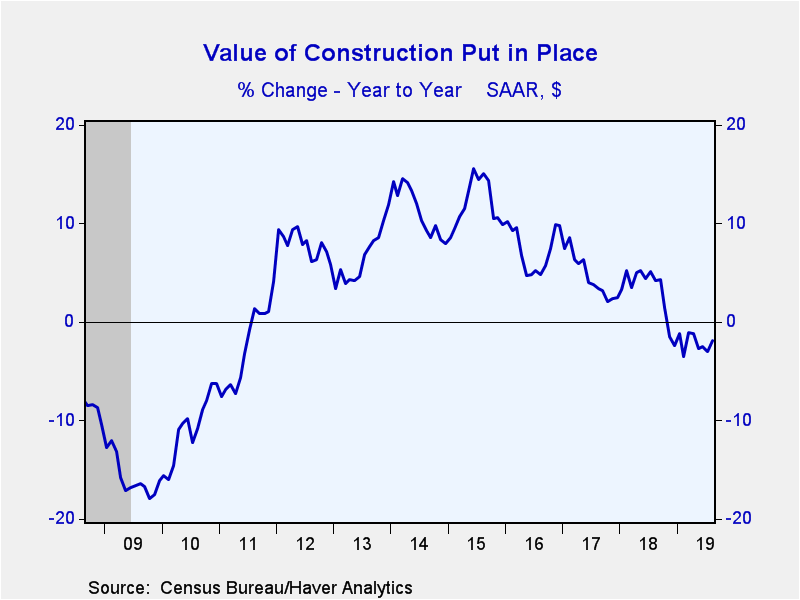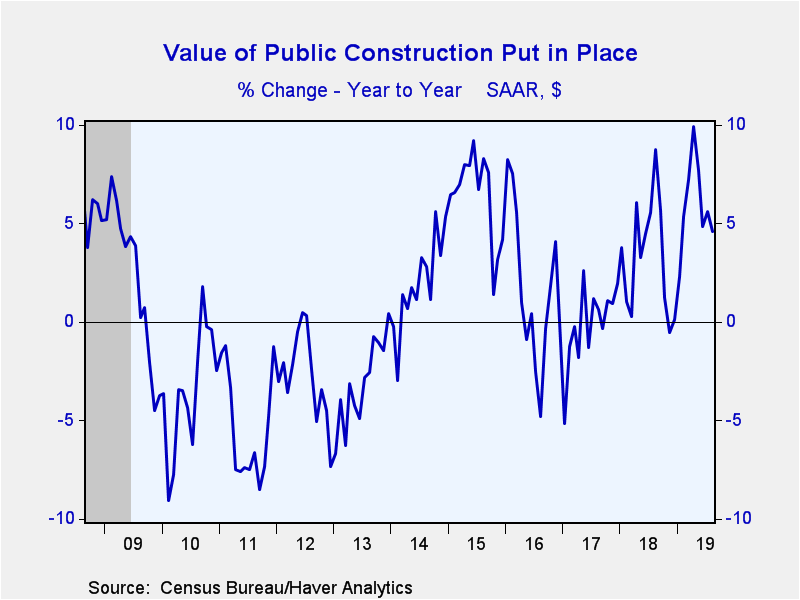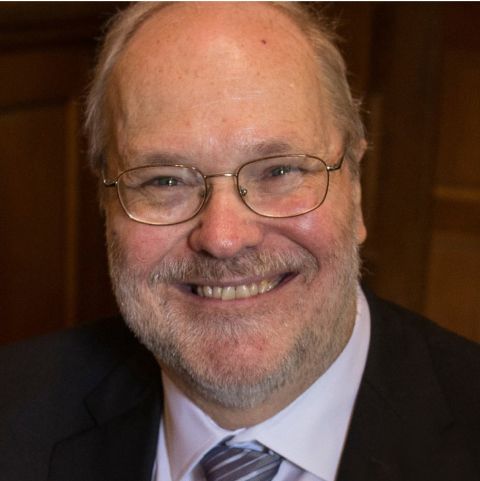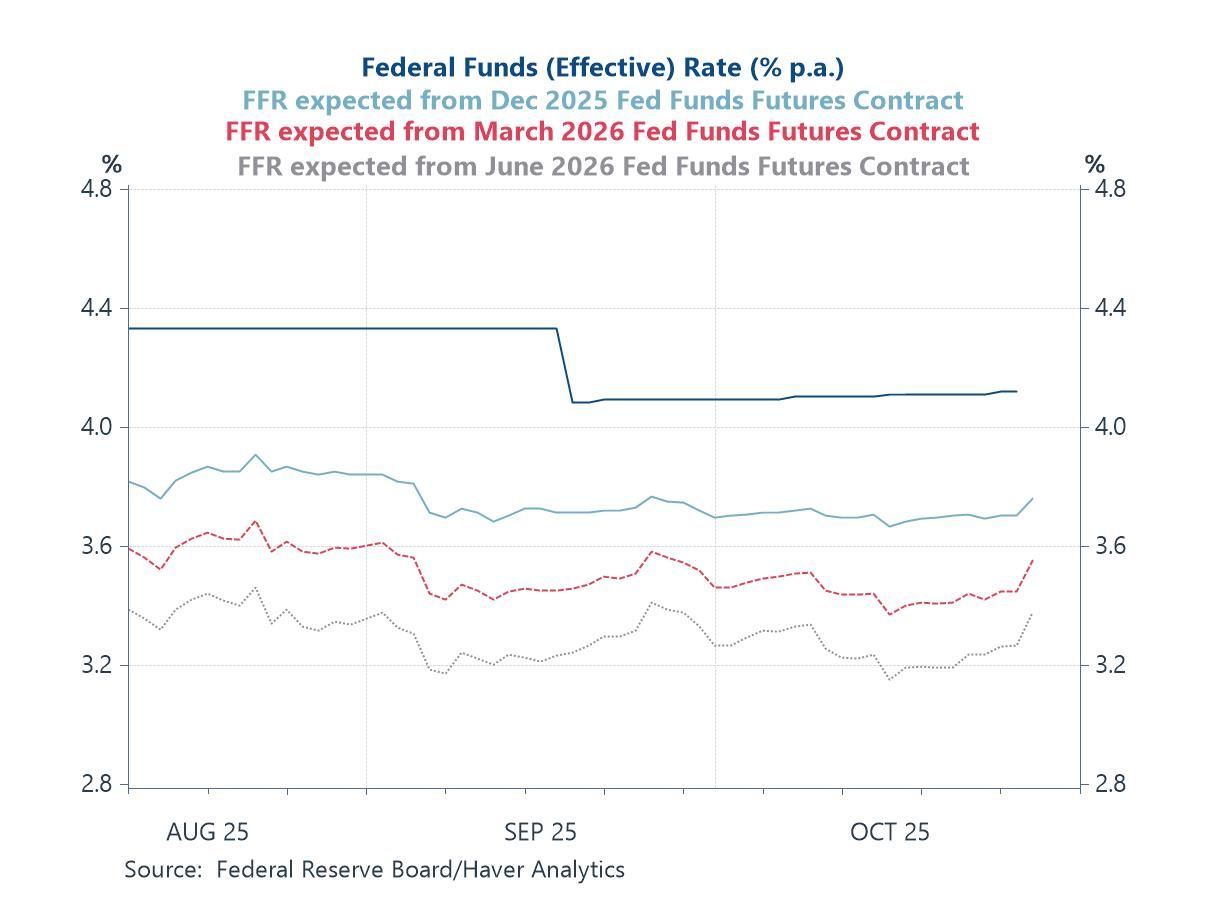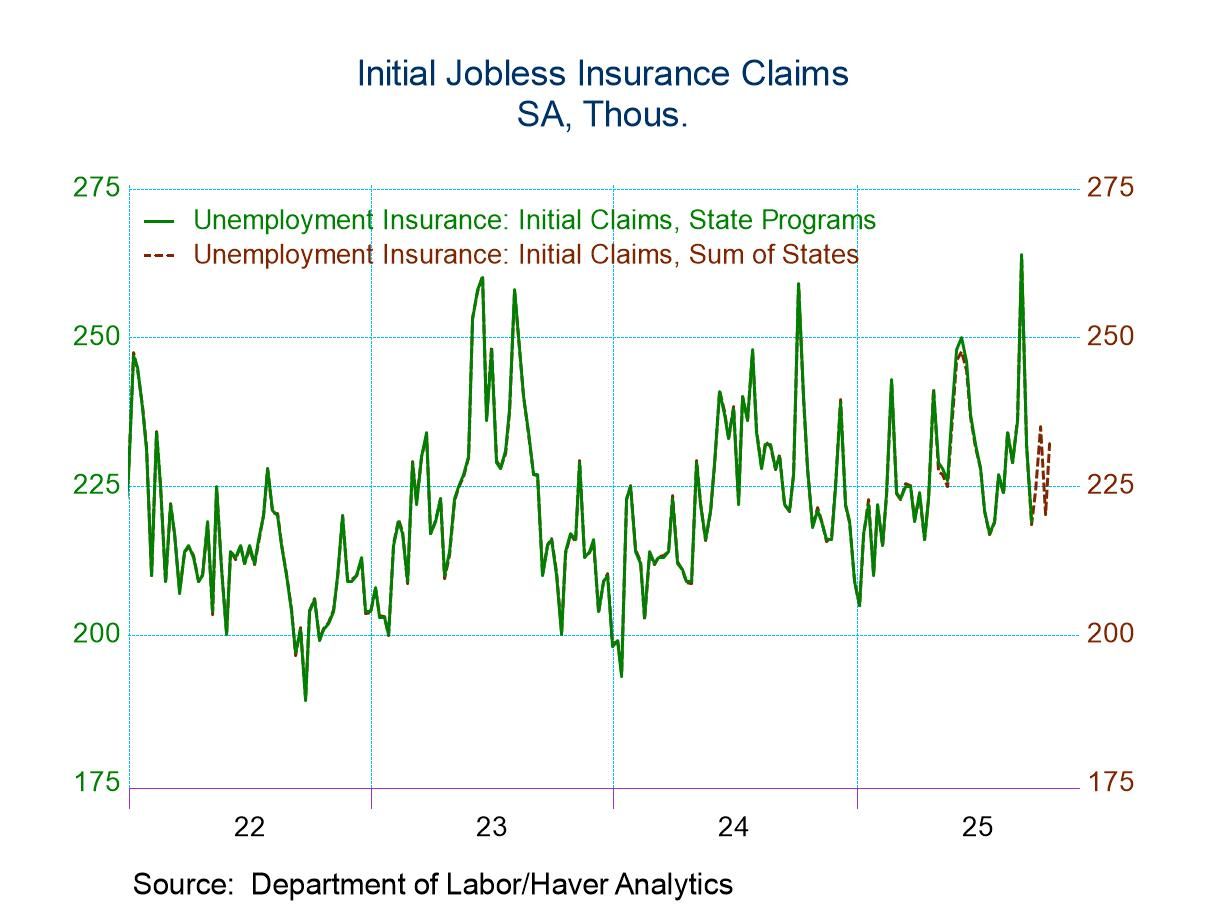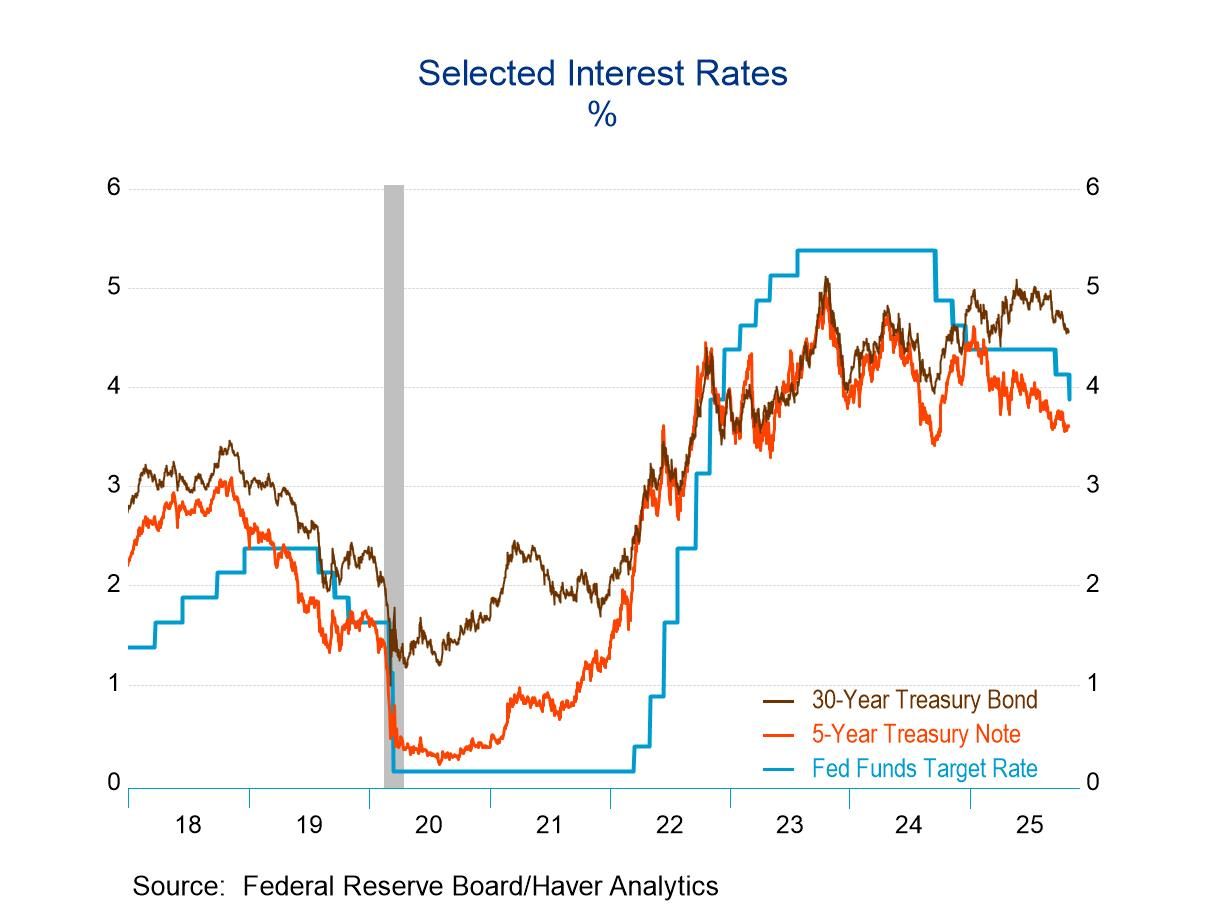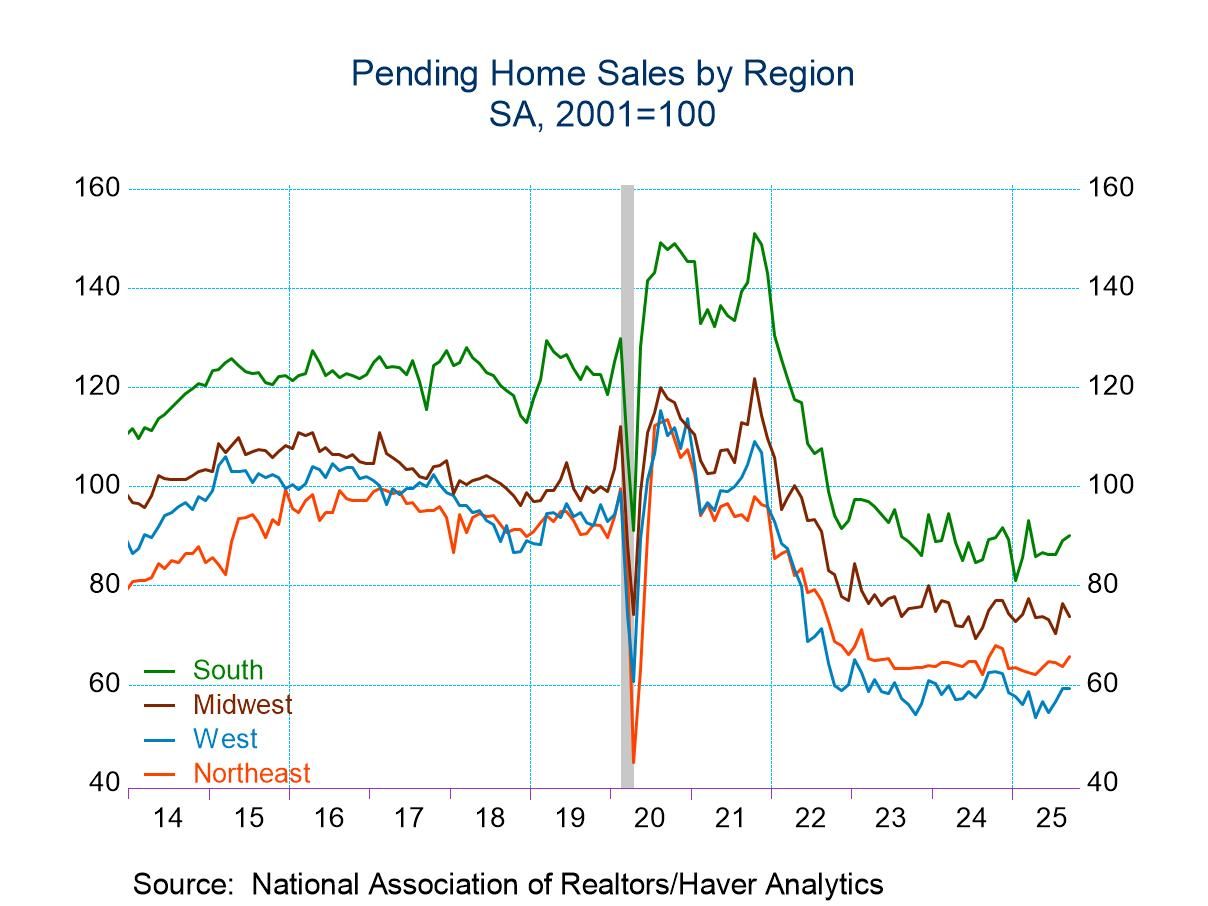 Global| Oct 01 2019
Global| Oct 01 2019U.S. Construction Spending Steadies
by:Tom Moeller
|in:Economy in Brief
Summary
The value of construction put-in-place improved 0.1% (-1.9% y/y) during August following a little-revised stability in July. A 0.4% rise had been expected in the Action Economics Forecast Survey. Construction activity in the private [...]
The value of construction put-in-place improved 0.1% (-1.9% y/y) during August following a little-revised stability in July. A 0.4% rise had been expected in the Action Economics Forecast Survey.
Construction activity in the private sector was unchanged (-4.0% y/y) following four consecutive months of decline. Residential construction rose 0.9% (-5.0% y/y) after a 0.6% gain. Single-family building jumped 1.4% (-6.6% y/y) after a like increase in July. The value of home improvements rose 0.8% (-6.4% y/y) after a 0.5% slip. Multi-family construction declined 0.9% (+7.4% y/y), the fifth monthly decline this year.
Private nonresidential building activity declined 1.0% (-2.8% y/y) during August, down for the fourth month in the last five. Health care construction weakened 2.0% (+4.6% y/y). Transportation sector construction held steady (-1.5% y/y). Commercial building declined 2.8% (-13.0% y/y) and power construction was off 1.7% (-4.3% y/y). Office construction was little changed (6.2% y/y). To the up-side, factory sector building rose 0.5% (1.6% y/y).
Public sector building activity increased 0.4% during August (4.6% y/y) following a 1.4% increase. Construction of highways & streets rose 0.6% (4.1% y/y). It accounts for roughly one-third of the dollar value of public building activity. Transportation sector building eased 0.5 % (+8.9% y/y) for a second month while commercial construction declined 6.8% (23.6% y/y). Health care building improved 0.7% (-4.9% y/y).
The construction spending figures, some of which date back to 1946, are in Haver's USECON database. The expectations reading can be found in the AS1REPNA database.
| Construction Put in Place (SA, %) | Aug | Jul | Jun | Aug Y/Y | 2018 | 2017 | 2016 |
|---|---|---|---|---|---|---|---|
| Total | 0.1 | 0.0 | -0.9 | -1.9 | 3.1 | 4.6 | 7.3 |
| Private | 0.0 | -0.5 | -0.4 | -4.0 | 3.1 | 6.2 | 9.3 |
| Residential | 0.9 | 0.6 | -0.8 | -5.0 | 2.8 | 12.5 | 10.8 |
| Nonresidential | -1.0 | -1.6 | 0.1 | -2.8 | 3.4 | -0.5 | 7.8 |
| Public | 0.4 | 1.4 | -2.6 | 4.6 | 3.3 | -0.2 | 1.6 |
Tom Moeller
AuthorMore in Author Profile »Prior to joining Haver Analytics in 2000, Mr. Moeller worked as the Economist at Chancellor Capital Management from 1985 to 1999. There, he developed comprehensive economic forecasts and interpreted economic data for equity and fixed income portfolio managers. Also at Chancellor, Mr. Moeller worked as an equity analyst and was responsible for researching and rating companies in the economically sensitive automobile and housing industries for investment in Chancellor’s equity portfolio. Prior to joining Chancellor, Mr. Moeller was an Economist at Citibank from 1979 to 1984. He also analyzed pricing behavior in the metals industry for the Council on Wage and Price Stability in Washington, D.C. In 1999, Mr. Moeller received the award for most accurate forecast from the Forecasters' Club of New York. From 1990 to 1992 he was President of the New York Association for Business Economists. Mr. Moeller earned an M.B.A. in Finance from Fordham University, where he graduated in 1987. He holds a Bachelor of Arts in Economics from George Washington University.


